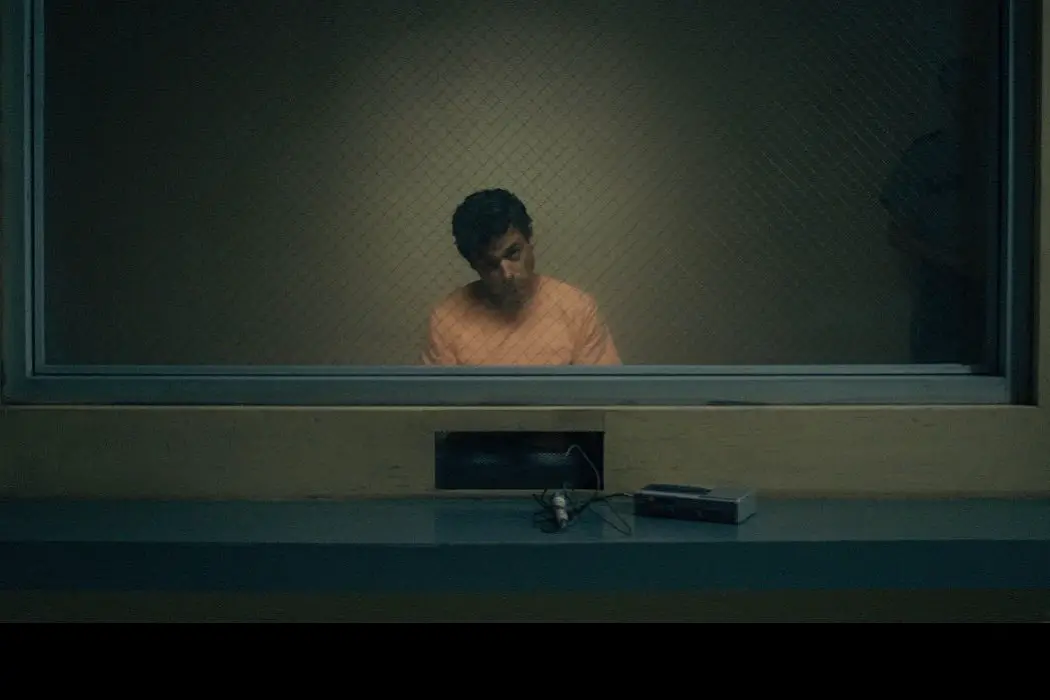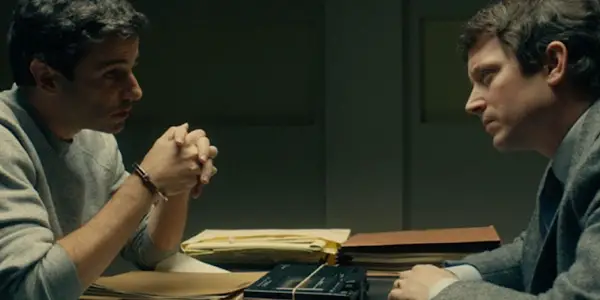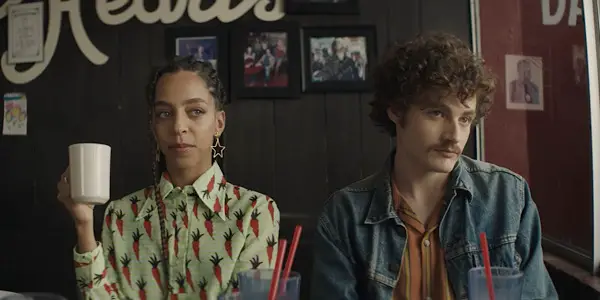Tribeca 2021, Report 1: No Man of God, Shapeless & Mark, Mary & Some Other People

Kristy Strouse is the Owner/Editor in Chief of Film Inquiry,…
It’s the Tribeca Film Festival time again which means more movies and plenty of coverage! After the last year and a half we’ve all had, films have definitely been a sense of comfort and normality for me. In a lot of ways, Tribeca this year served as a beacon of further hope.
There were so many intriguing films this time around, and I was very fortunate to screen quite a few, of all genres, with many helmed by female artists. In my first report, all three are directed by women, each with their own distinct vision.
No Man of God (Amber Sealey)

Something I asked myself when I first heard about this film (and later discussed with the director) is how many Ted Bundy movies do we need? There’s an obvious fascination with serial killers, especially in this country, and in recent years, Bundy has been one to garner quite a bit of coverage. I was happy to have the answer to this question delivered in the form of a story that said “a lot more” but did so with less. Instead, No Man of God takes a more intimate setting, giving us more insight into a complicated relationship, residing within an eerie psychological place.
The film offers up something new as it focuses on FBI analyst Bill Hagmaier (Elijah Wood), who interviewed Bundy between 1985 and 1989, up until the day of his execution. Bundy is known to be dishonest and evasive, but Bill takes the task on, hoping to get some understanding behind his crimes, as well as an admittance of them. The majority of the film takes place in small rooms, the two of them trying to outsmart the other – in a sense – both fully aware of what buttons to push and how the human brain works.
Luke Kirby, providing the best portrayal of Bundy that I’ve seen (and one of the best performances of the year that I’ve seen), is truly transformative, and his scenes with the equally terrific Elijah Wood as Bill, are mesmerizing. Kirby manages to truly unnerve the audience as well as Wood, with some really gripping moments that were written and inspired by the real conversations between these two. The film hinders on the incredible portrayals of our two leads and how this true story is molded to the screen. Director Amber Sealey crafts something powerful, truly utilizing the talent at her fingertips.
No Man of God works, in large part, because of the amazing writing by C. Robert Cargill (as Kit Lesser), and because the movie shows the ugliness at full display. There’s no glorification here, and as the two form a unique relationship, there’s no moment of empathy for Bundy. By the end, after an especially gut-wrenching scene where Bundy describes in disturbing detail some of what he did, all that’s left is the certainty of what and who he was. That attentiveness encompasses the entire project, making the film feel as real as the source, translating to a discomforting, but ultimately effective experience that’s hard to shake. At some points throughout the movie the pacing lets up, not completely capitalizing on its momentum, but it quickly course corrects.
With a carefully cultivated direction that unites excellence, the finished product is riveting. For the unforgettable performances and skin-crawling realism alone, No Man of God is a must-see.
Shapeless (Samantha Aldana)

Ivy (Kelly Murtagh) dreams of becoming a star. Working to make ends meet at a laundry service by day, her aspirations remain on the stage, a place where she spends nights as a lounge singer in New Orleans. Once she’s done performing she’s quick to recede back into her small apartment, away from her bandmates and friends. It’s there that Ivy feels free (or rather more free) to drop her veil, where the secret she’s kept claws its way out. However, she can’t escape the gnawing beast inside, which serves as an allegory for her eating disorder and body dysmorphia that’s controlling her life. From the beginning of the film, Ivy isn’t in a good place, but as things continue, the spiral down increases. She frequently binge eats and purges until it even wears on the thing she wants most; impairing her singing voice.
Samantha Aldana concocts a captivating and heavy brew, one that’ll – by the end – use all of its power to seep into your bones. There were many times I was caught up in the music, the lyrical way the film melded stunning cinematography, lovely jazz, and a dissonant score by Mandy Hoffman. While Shapeless resides in the horror genre, being both internally discomforting as well as externally disturbing at times, it’s also a beautifully communicated picture.
Kelly Murtagh is absolutely magnetic as Ivy. The movie really hinges on her, who takes up the majority of the screen time. Her bassist Oscar (Bobby Gilchrist) and her band try to be supportive as things get progressively worse, but as they do, she seems to push the others away even more.
The film uses a lot of soft focus and especially revels in the blue and red hues. Especially in the bar, where Ivy seems to really come alive, with things in her home and at work blander. There’s also often an emphasis on reflections, whether by mirrors or other avenues, and often a blur and distorting effect. Cinematographer Natalie Kingston does an exquisite job of marring what’s on-screen and how Ivy sees herself so that our interpretations align. Not only is it skewed by the camera, but Shapeless also dances with body horror, as Ivy’s body shifts and moves, taking on some pretty horrendous and unnatural additions that are very effective in their purpose (fingers, eyes protruding from the skin). Sometimes I wished that the script, co-written by Kelly Murtagh and Bryce Parsons-Twesten, gave us a bit more and would dive deeper into who Ivy was, providing more substance with the unforgettable style.
Regardless of any thinly written areas, I still felt consumed and upended by Shapeless, fully absorbed by the central performance, direction, and exquisite cinematography. Don’t sleep on this one, Samantha Aldana’s distinct feature debut is a stand-out.
Mark, Mary & Some Other People (Hannah Marks)

While the general construct at play in Mark, Mary, and Some Other People isn’t exactly a new one, it’s brought to fruition in a way that provides enough of a jolt to warrant a fresh place in the genre.
Mark (Ben Rosenfield) and Mary (Hayley Law) meet unexpectedly again after not seeing one another since school, as Mary is purchasing a pregnancy test. This quirky meet-cute is complete with awkward conversations, singing as a distraction, and closes with a believable connection between our leads. The chemistry formed is what truly makes the film work. We then get a montage of their blossoming relationship all the way to their marriage, all within the opening credits.
From here we quickly learn that Mary is interested in trying an open relationship, something Mark is immediately against. After some consideration the two decide to try it out, laying out some specific rules. Does this ever work out successfully in a film? I’ve yet to see it, especially when one of the two expresses hesitancy. The humor and the love story at its heart are utterly delightful. When the film veers from its organic charm, it starts to spin its wheels.
Mark, Mary, and Some Other People often highlights anomalous characteristics of both the characters as individuals and of the relationship, occasionally relying too much on the oddities, yet also finding opportunities to use that for consistent levity. The humor throughout the film is expertly quippy, fast-paced, and almost always nails the landing. Written and directed by Hannah Marks, the script is one of the strengths, with especially hilarious and cute dialogue. In the third act, the movie goes too dramatic, too fast, with a bit of tonal whiplash losing some of its earlier impact. While the ending and trajectory isn’t surprising, it still felt rushed. However, it doesn’t detract from the overall infusion of joy that is Mary, Mary, and Some Other People, and the talent shown by Marks. Rosenfield and Law are excellent casting choices, finding a comfortable rhythm to nestle into, making us believe their romance (in all of its stages).
Despite some final act problems and an over-extended close, Mary, Mary, and Some Other People is a lovely indie, sure to charm anyone who discovers it; and you should.
All three films are currently available to watch on-demand at Tribeca at Home until June 23rd.
Does content like this matter to you?
Become a Member and support film journalism. Unlock access to all of Film Inquiry`s great articles. Join a community of like-minded readers who are passionate about cinema - get access to our private members Network, give back to independent filmmakers, and more.
Kristy Strouse is the Owner/Editor in Chief of Film Inquiry, writer, podcaster, and all around film and TV fanatic. She's also VP of Genomic Operations at Katch Data and is a member of The Online Association of Female Film Critics and The Hollywood Creative Alliance. She also has a horror website: Wonderfully Weird & Horrifying.













